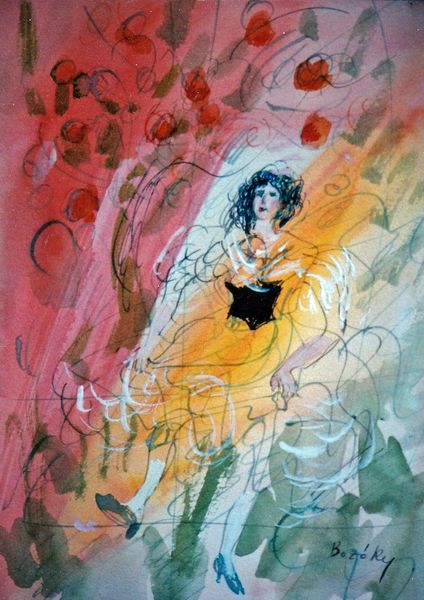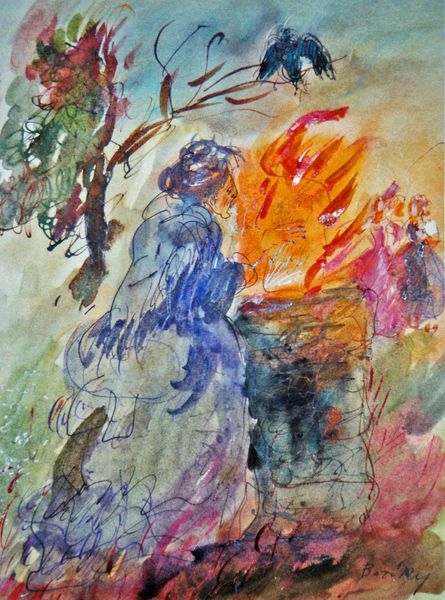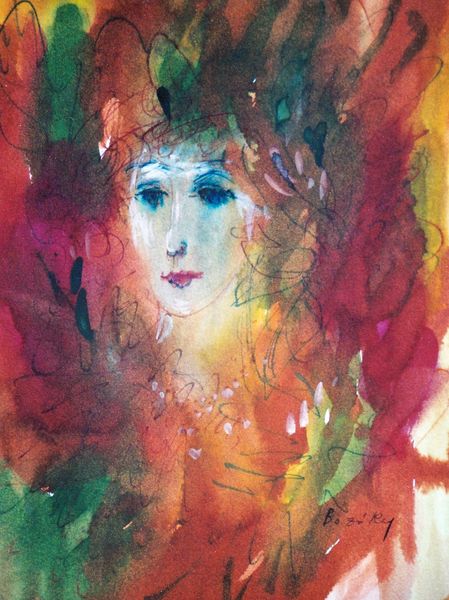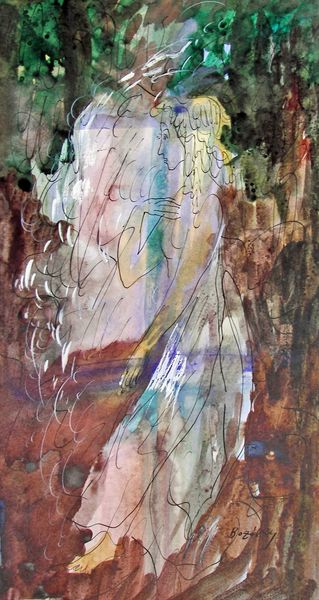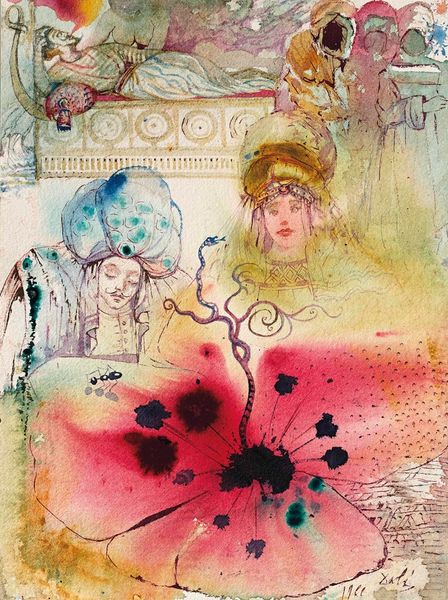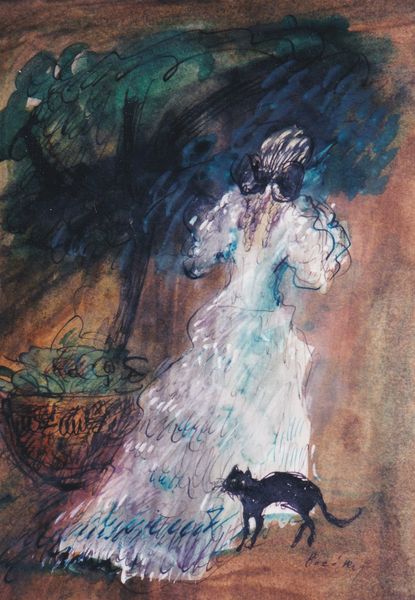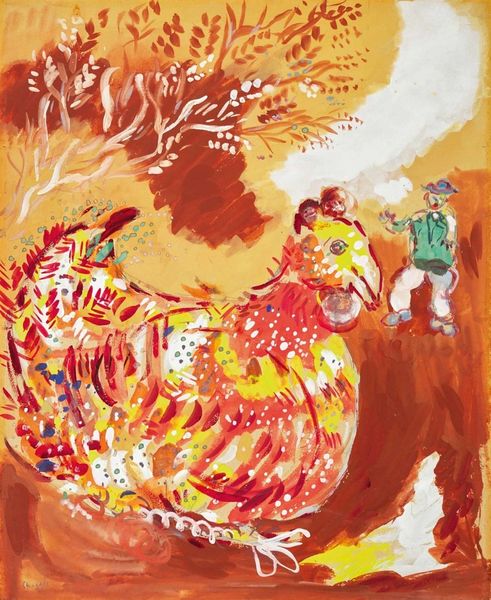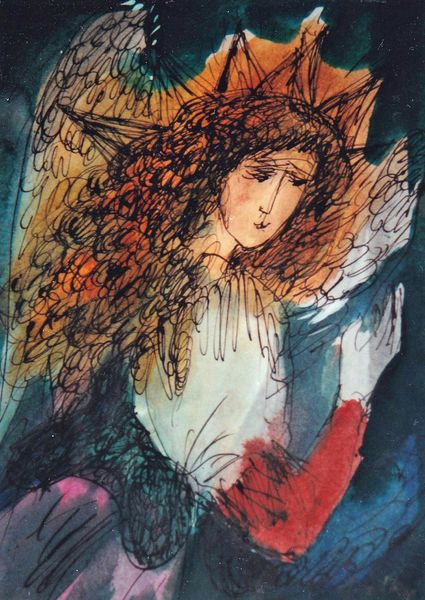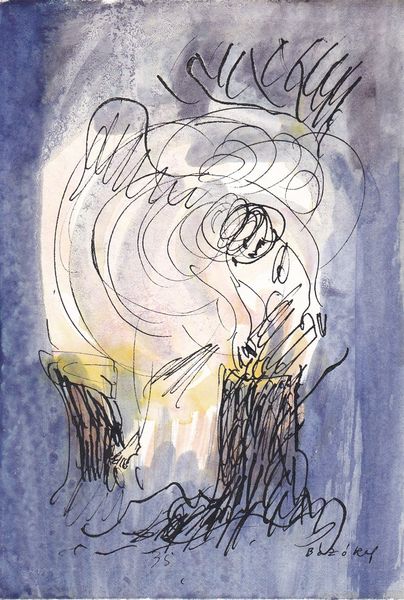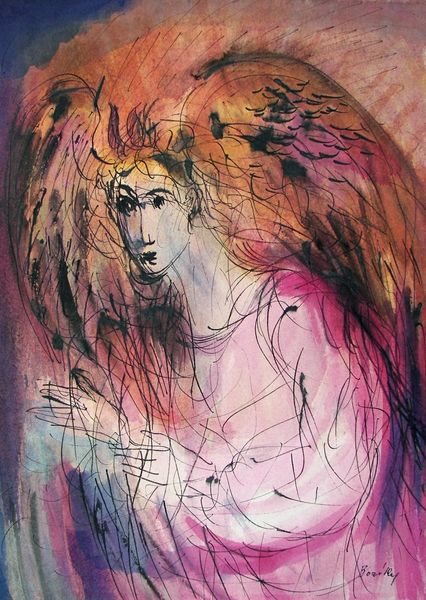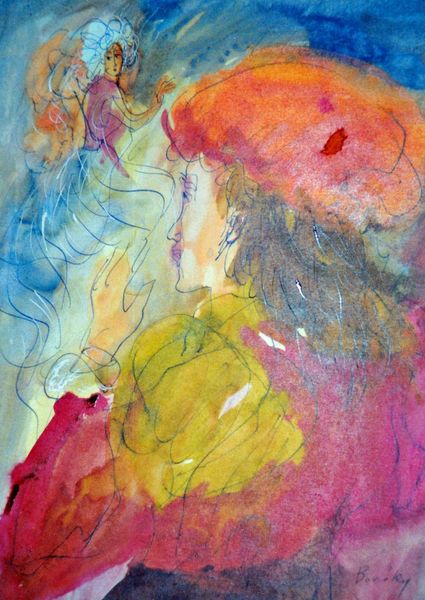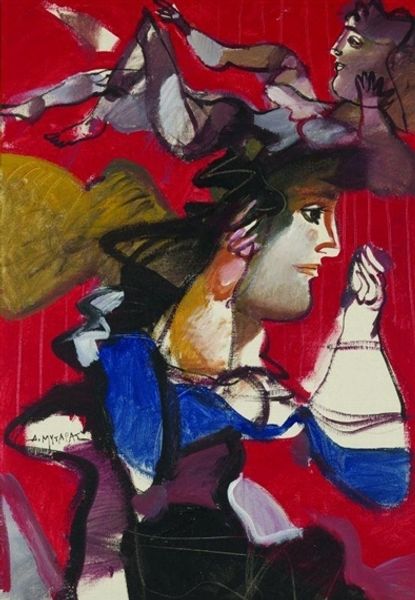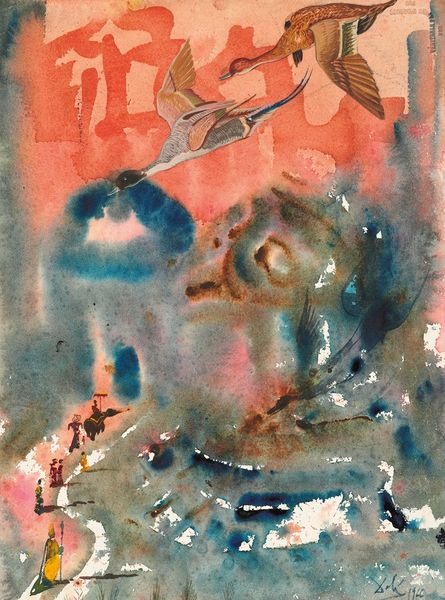
watercolor
#
portrait
#
girl
#
figuration
#
handmade artwork painting
#
watercolor
#
feminist-art
#
romanticism
#
watercolor
#
orange
Copyright: Maria Bozoky,Fair Use
Editor: Maria Bozoky's watercolor painting, "Rilke: Dansez l’orange (1/16)," presents a whimsical scene. A figure in motion, perhaps dancing, reaches toward abstract shapes evoking oranges or flowers. What strikes me most is the contrast between the fluid, almost ethereal background, and the sharp lines of the figure's dress. How do you interpret this work, especially concerning the figure's dynamic pose within this dreamlike space? Curator: This piece offers a rich commentary on the representation of women's bodies and agency, particularly in relation to nature. The dancer's pose, while dynamic, seems almost constrained by the swirling abstract elements, which, depending on how you read them, could represent opportunities or perhaps societal expectations. The title, referencing Rilke and oranges, infuses themes of artistic creation with a powerful feminine symbolism, don't you think? How might this "dance" symbolize the negotiations women artists make between creative expression and societal expectations? Editor: That's a compelling point. I hadn't considered the societal constraints element, but seeing it as a conversation about agency certainly changes the perspective. I was so caught up in the romantic and ephemeral quality, I overlooked potential tensions. Curator: Exactly. Feminist art, particularly drawing from romanticism, frequently interrogates idealized visions of femininity. This artist doesn’t seem interested in reproducing stereotypes; rather, she's using this form to investigate them. Look at the confident yet somehow vulnerable stance, the tension in the figure, how would you define this negotiation of contrasts? Editor: Now, considering the contrasts you mentioned, the figure's strength becomes more prominent, as if she is consciously pushing back on romantic ideals, refusing to be confined by the expectations they impose. The dance is one of resistance. Curator: Precisely. Through feminist-informed readings of form and content, we arrive at a deeper appreciation for how artists can engage social and cultural constructs around them. It certainly invites many important and necessary considerations on feminine symbolism! Editor: I am forever seeing this work in new and nuanced ways now, a perfect example of how contextual analysis reveals complexities in even the most seemingly straightforward artworks.
Comments
No comments
Be the first to comment and join the conversation on the ultimate creative platform.
